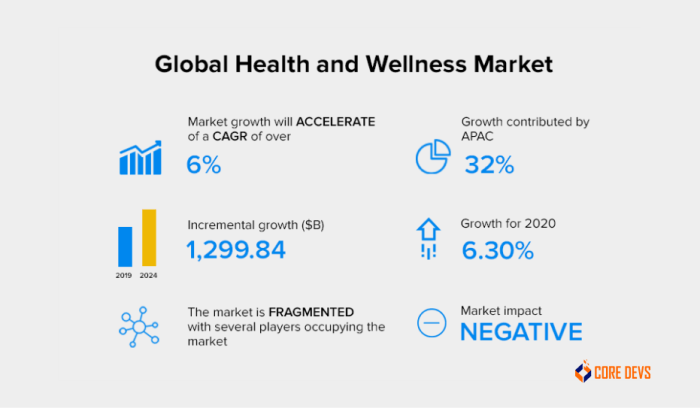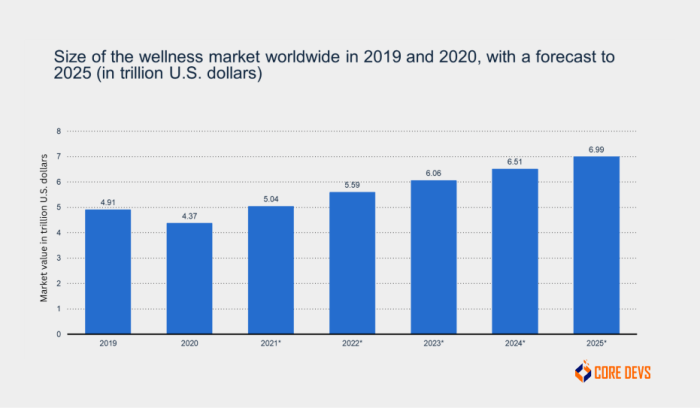
Exploring the landscape of wellness centers versus traditional clinics in 2025 opens up a world of possibilities and contrasts. As we delve into the evolving role of these establishments, we uncover the dynamic changes in healthcare practices and technological advancements that are reshaping patient care.
Let’s journey through the intriguing differences and potential benefits each option offers in the upcoming year.
Wellness Centers vs Traditional Clinics in 2025

In 2025, the roles of wellness centers and traditional clinics are evolving to meet the changing needs of patients in the healthcare landscape. Wellness centers are focusing more on preventive care, holistic approaches, and overall well-being, while traditional clinics continue to provide acute and specialized medical services.
Evolving Role of Wellness Centers
Wellness centers are becoming more integrated into the healthcare system, offering a wide range of services such as nutrition counseling, fitness programs, mental health support, and alternative therapies. They are shifting towards a proactive approach to health by emphasizing prevention and lifestyle modifications to improve overall wellness.
Evolving Role of Traditional Clinics
Traditional clinics are adapting to the digital age by incorporating telemedicine, remote monitoring, and electronic health records to enhance patient care and communication. They are also focusing on personalized medicine, genetic testing, and precision therapies to deliver more targeted treatments for complex conditions.
Changing Healthcare Landscape Impact
The changing healthcare landscape in 2025 is influenced by factors such as technological advancements, demographic shifts, rising healthcare costs, and increased patient preferences for holistic care. This has led to a greater emphasis on patient-centered care, value-based models, and interdisciplinary collaboration between wellness centers and traditional clinics.
Approach Differences
Wellness centers take a holistic approach to health, addressing the physical, emotional, and spiritual aspects of well-being. They promote lifestyle changes, stress management, and education to empower individuals to take control of their health. On the other hand, traditional clinics focus more on diagnosing and treating specific medical conditions using evidence-based medicine and specialized interventions.
Benefits and Drawbacks
Wellness centers offer benefits such as personalized care, holistic treatments, and a focus on prevention, but they may lack access to advanced medical technologies and specialized care for complex conditions. Traditional clinics provide expertise in acute care, specialized treatments, and advanced diagnostics, but they may have limited time for patient education and wellness promotion.
Technological Advancements

In the rapidly evolving landscape of healthcare, technological advancements play a crucial role in shaping the services offered at wellness centers and traditional clinics. These innovations are expected to revolutionize healthcare by 2025, paving the way for more efficient and effective patient care.
Integration of Technology in Healthcare
- Wellness Centers: Wellness centers are embracing technology to offer a more holistic approach to healthcare. They are incorporating wearable devices, health apps, and telemedicine platforms to help patients track their health metrics, access virtual consultations, and receive personalized wellness plans.
- Traditional Clinics: Traditional clinics are also integrating technology into their practices, although at a slower pace compared to wellness centers. Electronic health records (EHRs), telemedicine services, and AI-powered diagnostic tools are becoming more common in traditional clinical settings.
Innovative Technologies Shaping Healthcare
- Telemedicine: Telemedicine allows patients to consult with healthcare providers remotely, enabling access to care from anywhere. This technology is particularly beneficial for patients in remote areas or those with mobility limitations.
- Artificial Intelligence (AI): AI is revolutionizing healthcare by analyzing large amounts of data to assist in diagnosing diseases, predicting patient outcomes, and personalizing treatment plans. AI-powered tools are enhancing the efficiency and accuracy of healthcare services.
Impact on Patient Care
- Wellness Centers: The integration of telemedicine and AI in wellness centers is enhancing patient care by providing convenient access to healthcare professionals, personalized wellness recommendations, and proactive health monitoring.
- Traditional Clinics: Traditional clinics are also leveraging telemedicine and AI technologies to improve patient care, offering remote consultations, automated appointment scheduling, and data-driven treatment decisions.
Patient Experience and Engagement

In both wellness centers and traditional clinics, patient experience and engagement play a crucial role in ensuring quality healthcare services and building trust with patients.
Importance of Patient Experience
Enhancing patient experience is essential for both wellness centers and traditional clinics as it directly impacts patient satisfaction, loyalty, and overall health outcomes. Patients who have positive experiences are more likely to adhere to treatment plans and recommend the healthcare provider to others.
Strategies for Patient Engagement
Wellness centers often focus on personalized care plans tailored to individual needs, offering holistic treatments that address both physical and mental well-being. They may also provide educational resources, workshops, and community events to engage patients actively in their health journey.
On the other hand, traditional clinics may utilize technology to streamline appointment scheduling, offer telemedicine services, and provide online portals for patients to access their medical records and communicate with healthcare providers. These tools aim to improve convenience and accessibility for patients.
Personalized Care vs. Standardized Care
Wellness centers typically emphasize personalized care, taking into account the whole person and focusing on preventive measures and lifestyle modifications. This approach allows for a deeper connection between the patient and healthcare provider, fostering a sense of partnership in achieving optimal health outcomes.
In contrast, traditional clinics often follow more standardized care protocols, focusing on symptom management and disease treatment. While this approach may be efficient for certain conditions, it may lack the individualized attention and holistic approach found in wellness centers.
Impact of Patient Feedback
Both wellness centers and traditional clinics rely on patient feedback and reviews to evaluate the quality of their services and make improvements. Positive reviews can enhance the reputation of healthcare providers, attract new patients, and build trust within the community.
Conversely, negative feedback can highlight areas for improvement and prompt healthcare providers to reassess their practices.
Holistic Health and Preventive Care
Holistic health focuses on treating the whole person, considering physical, mental, emotional, and spiritual aspects to achieve overall well-being. Preventive care involves measures to avoid diseases or injuries before they occur, emphasizing proactive health management.
Wellness Centers:
- Wellness centers offer holistic health programs that combine various therapies such as acupuncture, meditation, yoga, and nutritional counseling to address the mind-body connection.
- They provide preventive care through health screenings, lifestyle assessments, and personalized wellness plans to help individuals maintain optimal health.
- Wellness centers promote holistic health by integrating alternative therapies with traditional medicine to treat the root cause of health issues.
Traditional Clinics:
- Traditional clinics are increasingly incorporating preventive care services like vaccinations, health education, and chronic disease management to focus on wellness promotion.
- They offer programs to address lifestyle factors that impact health, such as smoking cessation, weight management, and stress reduction strategies.
- Traditional clinics emphasize the importance of regular check-ups and screenings to detect health problems early and prevent complications.
Nutrition, Fitness, and Mental Health Services:
- Wellness centers provide nutrition counseling, fitness classes, and mental health therapies to support a balanced and healthy lifestyle.
- Traditional clinics offer dietary advice, exercise recommendations, and mental health screenings to address the holistic needs of patients.
- Both establishments recognize the significance of nutrition, fitness, and mental health in enhancing overall well-being and preventing chronic conditions.
Last Recap
In conclusion, the discussion surrounding wellness centers versus traditional clinics in 2025 highlights the intricate balance between personalized care, technological innovations, and holistic health approaches. As we navigate the complexities of healthcare options, it becomes evident that the future holds promising advancements that will redefine patient experiences and outcomes.
Top FAQs
What role will technology play in shaping wellness centers and traditional clinics by 2025?
Technology is expected to revolutionize healthcare services by enhancing patient care, streamlining processes, and enabling remote access to medical professionals.
How do wellness centers differ from traditional clinics in terms of patient engagement?
Wellness centers often focus on personalized care and holistic approaches, while traditional clinics may offer more standardized treatment plans.
What programs or initiatives are typically offered by wellness centers and traditional clinics to promote holistic health?
Wellness centers may provide nutrition counseling, fitness classes, and mental health services, while traditional clinics may focus more on illness treatment rather than prevention.














